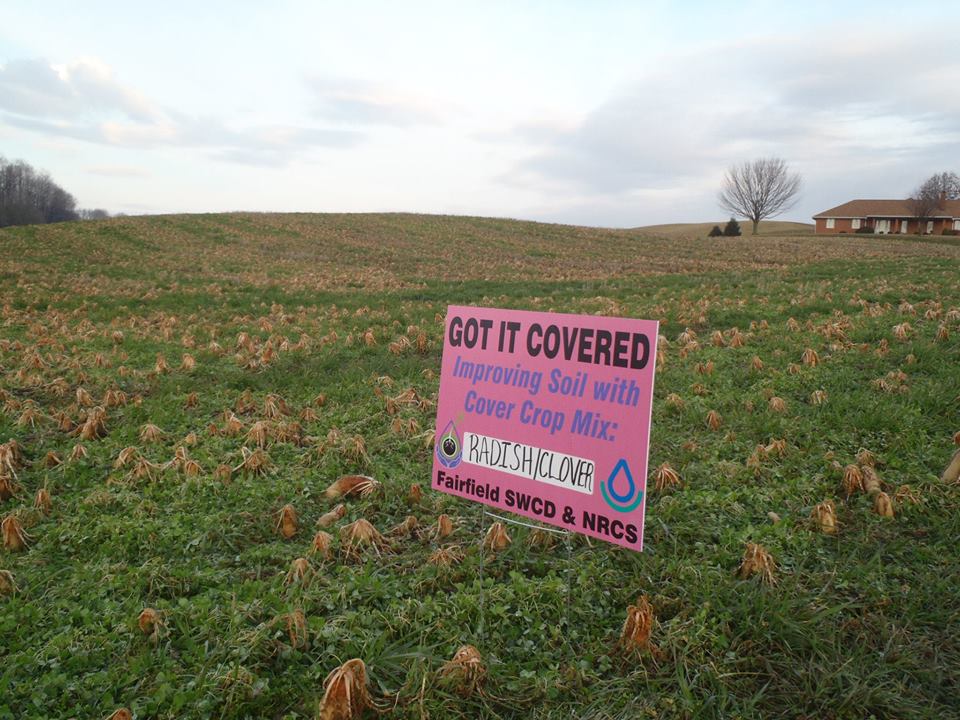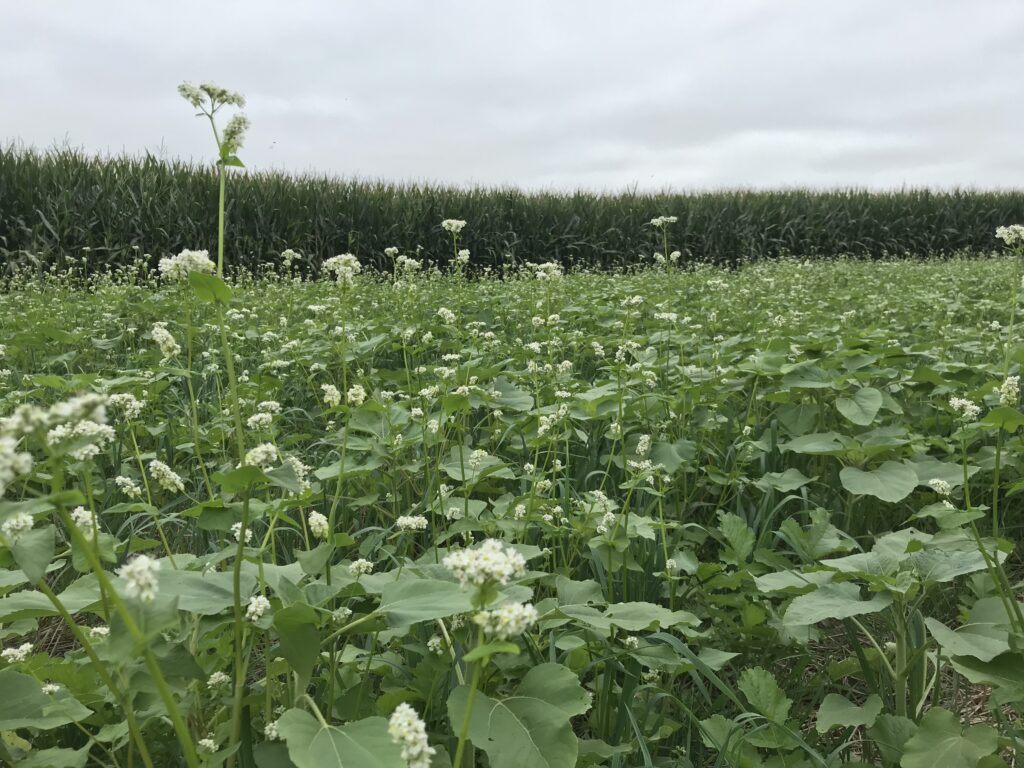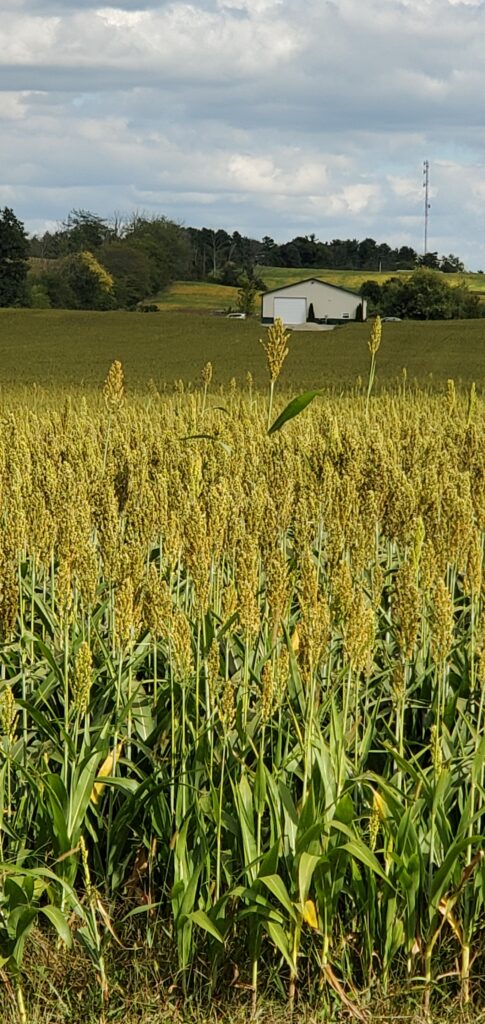Cover Crops
Many farmers and gardeners are incorporating cover crops in their crop fields or gardens. Cover crops can be grown in a monoculture, however they are often mixed and planted as cover crop “cocktails.” These mixtures have synergy and often offer more benefits than each single species could alone. Mixtures may include oilseed radishes, annual & cereal rye, Austrian winter peas, oats, and/or buckwheat just to name a few. Check out our post, Don’t Farm Naked, for cover crop plant descriptions .
Cover crops provide ground cover over winter to protect the soil. Since they are typically planted during the off-season, their green presence in the field often draws the attention of those passing by. The radishes, in particular, have caused quite a stir in some communities after frost when they start to decay and smell like natural gas for a brief time.
In an effort to bring awareness to these off-season heroes, in 2013 Fairfield SWCD teamed up with local farmers that were using cover crops, placing bright pink signs at field edges that provided species identification. These cover crop locations and species were mapped on the District website and Facebook page. This allowed interested parties to locate cover crop stands within their watershed. Some of the cover crops serve double duty and can be grazed. More information on cover crops can be found in the guide, Cover Crops for Southwest Ohio.






